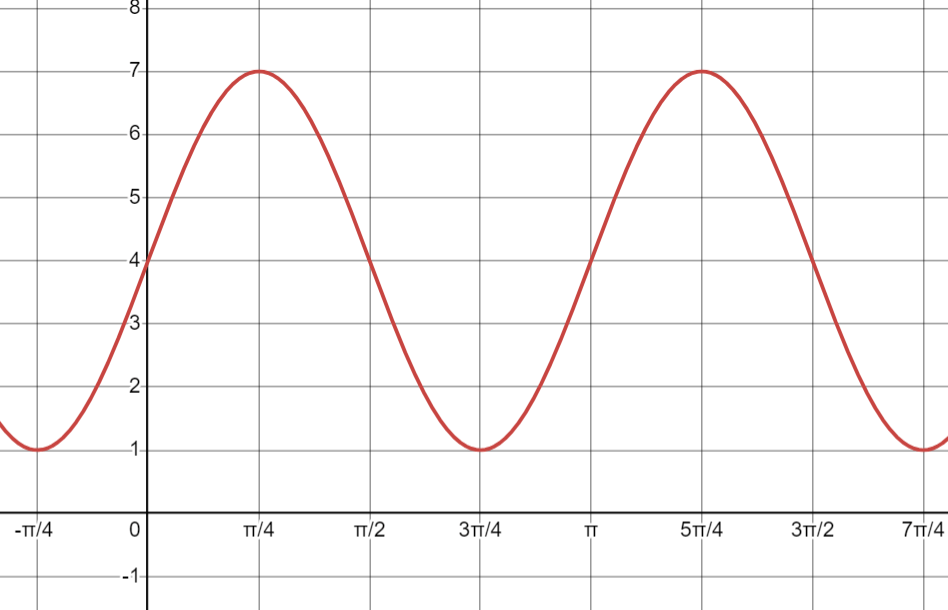Given the functions f(x) and g(x), find f(g(x)) .
f(x)= x+5
g(x) = x^2
x^2+5
What is 4th term of the binomial expansion of (x+7)^5 .
What is 3430x ?
What is an asymptote?
Simplify the expression: cos90°cos270°
Component form formula (given two ordered pairs).
What is <Δ x, Δ y>
If a function passes this test, we can say it has an inverse.
What is the Horizontal Line Test?
Find the y-coordinate of the following systems of equations.
x+y=9
-x+2y=6
y=5
Determine the amplitude of
f(x) = (-2/3)sin4x
What is 2/3?
What is the quotient identity of tan?
What is (sin/cos)?
Direction angles are... (positive or negative?)
What is positive?
Evaluate:
sum_(n=2)^5 (3n-1)
What is 38?
Given the polar coordinates (5, pi/4) , find the corresponding rectangular coordinates.
((5sqrt(2))/2, (5sqrt(2))/2)
This calculation determines the period of a sine or cosine graph.
What is 2π/b?
What is the tangent value for 60° on the unit circle?
What is √3?
Given the vectors u= <4,3> and v= <-2,5> .
Find 3u-2v.
<16, -1>
Starting position: g(x) = x2
Ending position: g(x) = (x+1)2 + 10
Describe the transformation of the graph.
What is a horizontal shift 1 to the left, a vertical shift 10 units up?
-234 degrees in radian form.
What is
(-13π) / 10
?
Determine the amplitude and the period from the following graph.

Amplitude: 3
Period:
pi
Simplify:
sin(theta)csc(theta)
What is 1?
Given the vector v=<3,6> , find the magnitude and the direction angle. Round both answers to 3 decimals.
Magnitude = 6.708
Direction Angle = 63.435
If
f(x) = (x+4)/2
, find the inverse of f(x).
What is f-1 = 2x-4?
Find the area of the triangle with A=40° , b= 11 feet, and c= 5 feet.
17.68 ft2
Determine the period, horizontal shift, and vertical shift of this graph.
y = -cos(3x + π/2) + 3
Period: 2π/3
Horizontal shift: π/6 left
Vertical shift: up 3
Use trig identities to simplify:
sin^2(theta)/(1-sin^2(theta)
tan^2(theta)
Formula for finding an angle between two non-zero vectors
cosθ = (u * v) / ( ||u|| * ||v||)